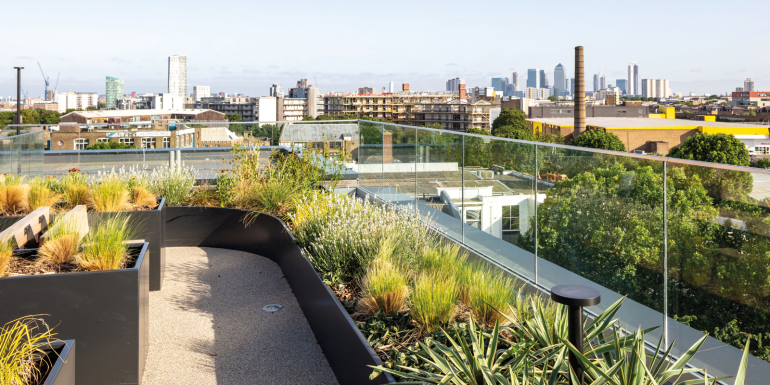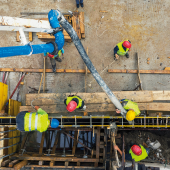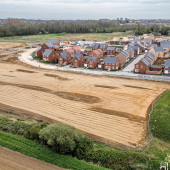Court ruling throws Building Safety Act definitions into question

The roof terrace of Smoke House and Curing House was ruled as another storey, making the building an HRB
After a court ruling threw into question the veracity of government guidance, Matt Lamy asks whether it is worth the paper it is written on.
Judge Mark Martynski – sitting on a London First-Tier Tribunal last year – made a ruling that a six-storey building with a roof garden is a seven-storey HRB.
Nicholas Blomfield, the leaseholder of Smoke House and Curing House in east London, wanted the landlord to remove cladding and combustible material from an internal courtyard, balconies and roof terrace. One of the issues in the tribunal was whether the building should be subject to the stricter level of safety standards required by a higher-risk building (HRB).
Under the 2022 Building Safety Act (BSA), HRBs are defined as a building with at least two residential units, that is taller than 18 metres or has at least seven storeys. Smoke House and Curing House has ground-floor commercial space, five residential storeys and then roof gardens.
While the BSA does not specifically address the status of roof terraces, government guidance published in June 2023 (Criteria for Determining Whether a Building is a Higher-Risk Building During the Occupation Phase of the New Higher-Risk Regime) states that open rooftops such as rooftop gardens should not be counted when determining the number of storeys. On the face of it, then, Smoke House and Curing House was not an HRB.
However, in his ruling Judge Martynski pointed out that Appendix A of Approved Document B (2022 edition) said a storey could be “a roof, unless it is accessible only for maintenance and repair”. He noted: “One of the concerns behind the definition of ‘storey’ for fire safety considerations must be where people are likely to be located (in) the event of a fire. Clearly person(s) might be located within flats or enclosed storeys. But where there is a roof garden, persons may well be located there. Therefore, the level of the roof garden will be significant in determining height.”
Judge Martynski also criticised contradictory secondary legislation and government guidance on what counts as a storey, saying the “evolution, amendment, addition to and in some cases withdrawal” of government guidance results in a “continuously changing resource”.
State of uncertainty
Ellie Fletcher, Solicitor at Devonshires, told Construction News: “This potentially pulls a number of buildings previously excluded from the HRB regime within scope. It also pulls into question the reliance people have previously placed on government guidance. The guidance is not a reliable source of law and no guidance circumvents the need to understand the legislation in detail.”
A joint statement from the Ministry of Housing, Communities and Local Government and the Building Safety Regulator (BSR) said: “It is important to note the Tribunal itself acknowledged it was not within its jurisdiction to formally determine whether the building being considered was an HRB. [The BSR] will continue to follow the statutory guidance, which states ‘rooftop gardens are not considered storeys and should not be counted as such’ when determining an HRB.
“The MHCLG and the BSR are currently considering … the decision that roof gardens should be classified as a storey when determining whether a building meets the … criteria under the Higher-Risk Buildings (Descriptions and Supplementary Provisions) Regulations 2023. In the meantime, the sector and regulatory bodies should continue to refer to existing government guidance. We recognise that the views expressed by the Tribunal may have created some uncertainty within the sector.”
Image credit | Craig Auckland






